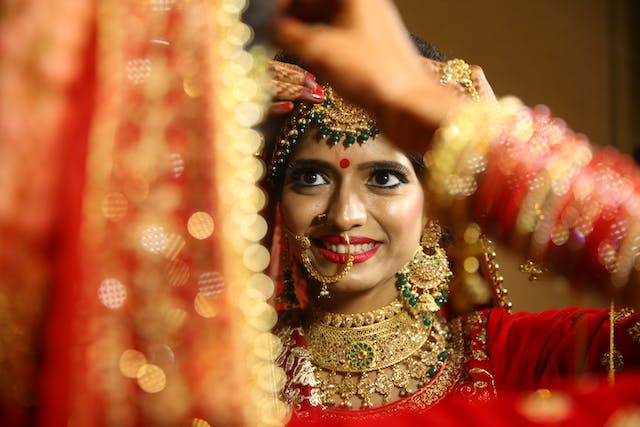Introduction: Your wedding dress is more than just a piece of clothing; it’s a symbol of your love story and a reflection of your unique style. However, finding the perfect fit off the rack can be challenging. Fear not! This guide is here to walk you through the transformative journey of alter wedding dress, helping you achieve a gown that is as unique as your love story.
1. Why Alter Your Wedding Dress?
- Personalization: Discuss the importance of tailoring your dress to match your body shape and personal preferences.
- Legacy of the Dress: Highlight the sentimental value of altering a family heirloom or second-hand gown.
2. Getting Started: The Alteration Consultation
- Finding the Right Professional: Guide brides on choosing a skilled seamstress or tailor for their specific alteration needs.
- Articulating Your Vision: Encourage clear communication about desired changes and alterations.
3. Common Alterations and Adjustments
- Hemming and Length Adjustments: Explore the process of altering the length to ensure the dress complements the chosen shoes.
- Taking In or Letting Out: Address alterations related to changes in weight or body shape.
- Bodice Adjustments: Discuss options for achieving the perfect fit around the bust, waist, and hips.
4. Adding Unique Touches
- Embellishments and Details: Explore the possibility of adding personal touches such as lace, beads, or embroidery.
- Sleeve Additions or Removal: Discuss options for altering sleeves or converting a sleeveless dress to better suit the bride’s style.
5. Budgeting for Wedding Dress Alterations
- Setting a Realistic Budget: Provide insights into budgeting for alterations and the importance of allocating funds for this crucial step.
- Prioritizing Alterations: Help brides identify which alterations are essential and which ones may be optional based on their preferences and budget.
6. Timeline for Alterations
- Early Planning: Emphasize the need to start alterations early to accommodate multiple fittings and adjustments.
- Final Fitting Preparations: Discuss the importance of the final fitting and what brides should bring to ensure a smooth process.
7. Maintaining Communication Throughout the Process
- Open Dialogue: Stress the significance of clear and consistent communication with the seamstress or tailor.
- Expressing Concerns or Changes: Encourage brides to speak up if they have any concerns or if they decide on additional changes during the alteration process.
8. The Big Reveal: Your Transformed Wedding Dress
- The Unveiling Moment: Discuss the emotions and excitement of seeing the altered dress for the first time.
- Final Checks and Adjustments: Highlight the importance of doing a final check to ensure every detail is perfect.
